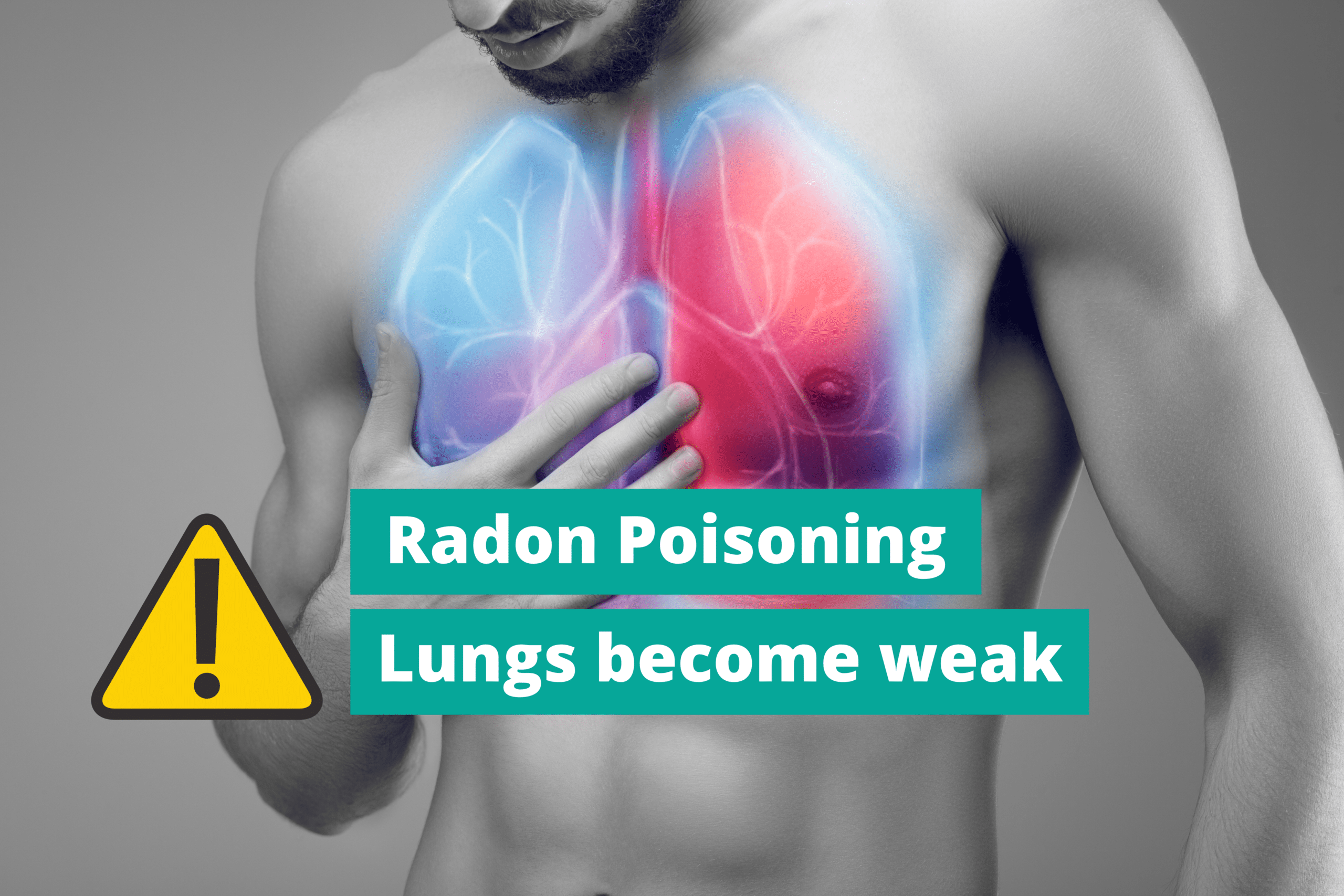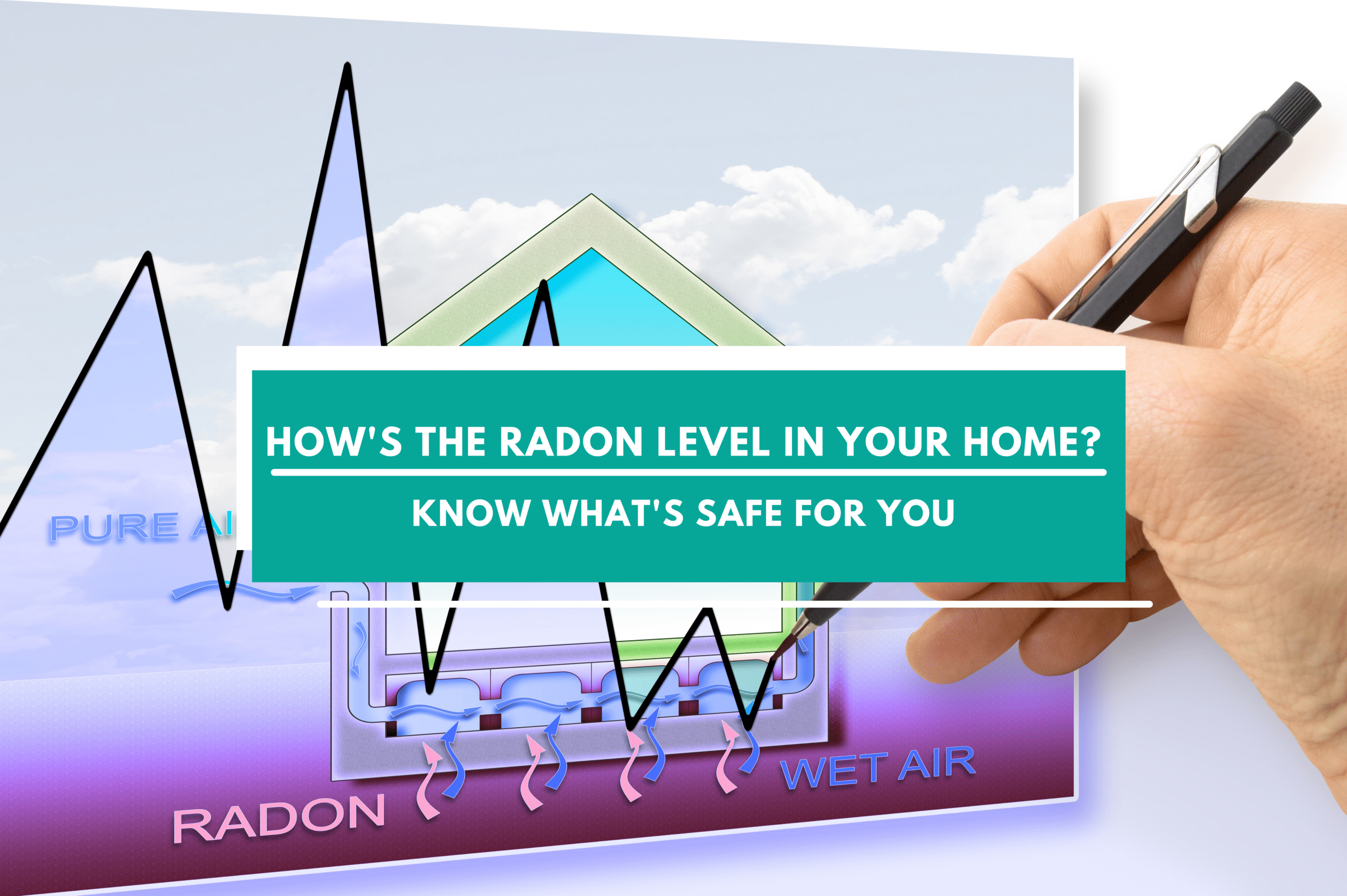If you’ve been living in your house for years, and still haven’t checked radon levels, then this article will help you to understand the importance of it. For those who don’t know, having a very high level of radon is very dangerous and it is the second leading reason behind lung cancer. Here, I will describe what is considered an acceptable radon level.
The EPA has stated that below 4.0 pCi/L ca of radon gas is safe for households in the US. However, the World Health Organization stated that keeping it between 2.00 and 4.00 would be ideal because long-term exposure to radon gas at 4.0 pCi/L can harm human lungs.
I’ve talked about the tolerable radon levels for a home, and now I'd like to provide some valuable insights into this topic. One of the most common questions that I get asked is what are acceptable radon levels? And here, I will extensively explain it. For a better understanding of this topic, please stick around till the end!
What are considered high radon levels?
In general, 4.0 pCi / L or more is considered toxic for human beings, and long exposure to such a hazardous gas can cause fatal diseases like lung cancer. But don’t take this value for granted, because the amount of radon that is considered high varies from country to country.
So, you might be wondering how you could know the highest cap on the radon level in your region. Well, a quick search on Google should do the trick. If you can’t find it on the internet, just call your family doctor and he should be able to help you.
Various ways radon level can increase in your house
Radon levels at your home can increase for various reasons. For instance, if your house has a lot of openings and cracks, a difference in air pressure occurs from indoors to the soil. Now, if the pressure remains higher than the soil underneath the house, you won’t have any problem.
On the contrary, your home will be like a vacuum for this hazardous gas, and it will start sucking the radon gas inside. It is the most common reason behind the invasion of this dangerous gas into your home.
A lot depends on where you live because radon gas has a direct connection with the soil. In the US, EPA (Environmental Protection Agency) has analyzed the whole country’s map and divided it into three zones.
Zone 3 is comparatively safe and the houses in zone 1 are at a higher risk of having radon invasion. You can easily check the zone of your area with a simple and quick Google search.

Risks of high levels of radon in a home
Having a high radon level in your home carries a number of risks. First of all, you need to understand one thing. We are all breathing in radon gas constantly. You might be thinking, how does that not affect us in any way? Well, inhaling a small amount of radon gas on a daily basis won’t affect you in any way. But, if your house has higher than tolerable radon, there are various risks involved.
A high amount of radon gas can permanently decrease the capacity of your lungs. It will make you weak, and you will have trouble doing your daily workout. Slowly, you will be a victim of radon poisoning and after a few years, you may develop lung cancer. As you might already know, it is very hard to treat.
However, there are ways to determine whether you are a victim of radon poisoning or not. There are a few warning signs to look out for, and if you can catch the problem early on, treatment will be much easier and less expensive than in the later stages.
Symptoms of radon poisoning
There are more than a few symptoms of radon poisoning. Below, I will describe them in detail.
Cough
In the initial stage, someone who has been affected by radon poisoning will have a non-stop cough. First, regular medicine will be able to cure it. But it will soon come back and after a certain time, medicine will stop working, and blood might come out with a cough.
Shortness Of Breath And Weezing
Another symptom of radon poisoning is having shortness of breath for a long period of time, and in the end, it will turn into wheezing. The breathing problem will be constant and after a while, inhalers might stop working completely.
If you have constant hoarseness throughout the day, it could be another red flag. It will largely occur after coughing.
Chest Pain
When it comes to symptoms of radon poisoning, one of the most common ones is having constant chest pain. Medicines might work for a while, but they won’t be a permanent solution. The chest pain will significantly increase while coughing and won’t go away completely.
Pneumonia And Bronchitis
Frequent infection with diseases such as pneumonia and bronchitis is another symptom of radon poisoning. But it will typically occur at a later stage.
If you notice a few or all of the symptoms mentioned above, don’t freak out. For those who don’t know, multiple diseases have the same type of symptoms. So the clever step would be to go to a doctor for a medical check-up.

How to prevent increased radon levels?
There are a few ways you can prevent radon levels from reaching a hazardous level. They are described below in detail.
Having A Permeable Layer for Gas
While building the house, you can place a gas-permeable layer right below the flooring or slab which will allow radon gas to move out of the house. Clean gravel of around 4-inch would be most suitable.
Now, if your home has a foundation in the crawlspace, placing such a layer won’t be possible. You can only use it in casement houses. Implanting such a layer will reduce the chances of having radon toxicity by a large margin.
Using Plastic Sheet
You can decrease the chances of having a high radon level by placing a plastic sheet right at the top of the permeable layer.
This sheet will almost completely diminish the chances of radon gas entering your home. But if your house has a crawlspace foundation, just place it at the top of the floor. Most modern architects use plastic sheets as an obvious step in building the house.
Seal The Cracks
It should be pretty obvious, but sealing all the holes and cracks in your home is one of the most important steps in preventing high radon gas levels. In particular, if the floor of your house has any cracks or leaks, immediately repair it.
Use A Vent Pipe
If you place a PVC pipe in the permeable layer of the house, the formed gas will quickly vent and the possibility of having a high radon level will decrease significantly.
There are some very powerful and quiet fans out there in the market for you to buy. They won't bump up your electricity bill at all as they usually run on lower amps.
Conclusion
As you can see, preventing higher radon levels is extremely important for your well-being. What are acceptable radon levels is a question that many people ask me frequently, and here, I explained it thoroughly.
Hopefully, after reading the whole article, you will be able to keep yourself and your family healthy.

